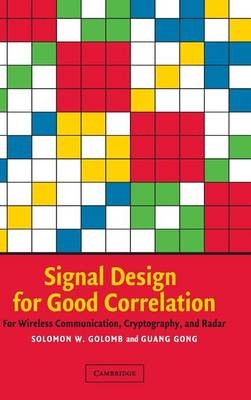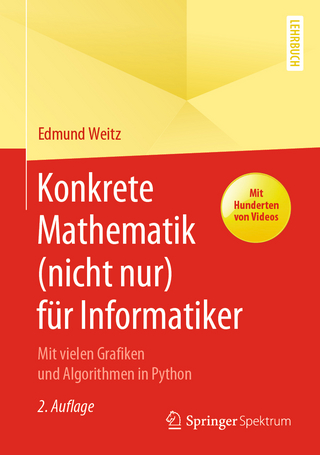
Signal Design for Good Correlation
For Wireless Communication, Cryptography, and Radar
Seiten
2005
Cambridge University Press (Verlag)
978-0-521-82104-9 (ISBN)
Cambridge University Press (Verlag)
978-0-521-82104-9 (ISBN)
This comprehensive text and reference presents all the necessary mathematical background to explain how signals with favorable correlation properties are generated, and to show how they satisfy the appropriate correlation constraints. Applications such as CDMA telephony, coded radar, and stream cipher generation are treated in depth.
This book provides a comprehensive description of the methodologies and the application areas, throughout the range of digital communication, in which individual signals and sets of signals with favorable correlation properties play a central role. The necessary mathematical background is presented to explain how these signals are generated, and to show how they satisfy the appropriate correlation constraints. All the known methods to obtain balanced binary sequences with two-valued autocorrelation, many of them only recently discovered, are presented in depth. The authors treat important application areas including: Code Division Multiple Access (CDMA) signals, such as those already in widespread use for cell-phone communication, and planned for universal adoption in the various approaches to 'third-generation'(3G) cell-phone use; systems for coded radar and sonar signals; communication signals to minimize mutual interference ('cross-talk') in multi-user environments; and pseudo-random sequence generation for secure authentication and for stream cipher cryptology.
This book provides a comprehensive description of the methodologies and the application areas, throughout the range of digital communication, in which individual signals and sets of signals with favorable correlation properties play a central role. The necessary mathematical background is presented to explain how these signals are generated, and to show how they satisfy the appropriate correlation constraints. All the known methods to obtain balanced binary sequences with two-valued autocorrelation, many of them only recently discovered, are presented in depth. The authors treat important application areas including: Code Division Multiple Access (CDMA) signals, such as those already in widespread use for cell-phone communication, and planned for universal adoption in the various approaches to 'third-generation'(3G) cell-phone use; systems for coded radar and sonar signals; communication signals to minimize mutual interference ('cross-talk') in multi-user environments; and pseudo-random sequence generation for secure authentication and for stream cipher cryptology.
1. General properties of correlation; 2. Applications of correlation to the communication of information; 3. Finite fields; 4. Feedback shift register sequences; 5. Randomness measurements and m-sequences; 6. Transforms of sequences and functions; 7. Cyclic difference sets and binary sequences with two-level correlation; 8. Cyclic Hadamard sequences, part 1; 9. Cyclic Hadamard sequences, part 2; 10. Signal sets with low cross-correlation; 11. Correlation of Boolean functions; 12. Applications to radar, sonar, and synchronization.
| Erscheint lt. Verlag | 11.7.2005 |
|---|---|
| Verlagsort | Cambridge |
| Sprache | englisch |
| Maße | 152 x 229 mm |
| Gewicht | 840 g |
| Themenwelt | Mathematik / Informatik ► Informatik ► Theorie / Studium |
| ISBN-10 | 0-521-82104-5 / 0521821045 |
| ISBN-13 | 978-0-521-82104-9 / 9780521821049 |
| Zustand | Neuware |
| Haben Sie eine Frage zum Produkt? |
Mehr entdecken
aus dem Bereich
aus dem Bereich
Teil 2 der gestreckten Abschlussprüfung : Fachinformatiker-/in …
Buch | Softcover (2023)
Europa-Lehrmittel (Verlag)
CHF 34,90
Buch | Hardcover (2021)
Springer Berlin (Verlag)
CHF 97,95


